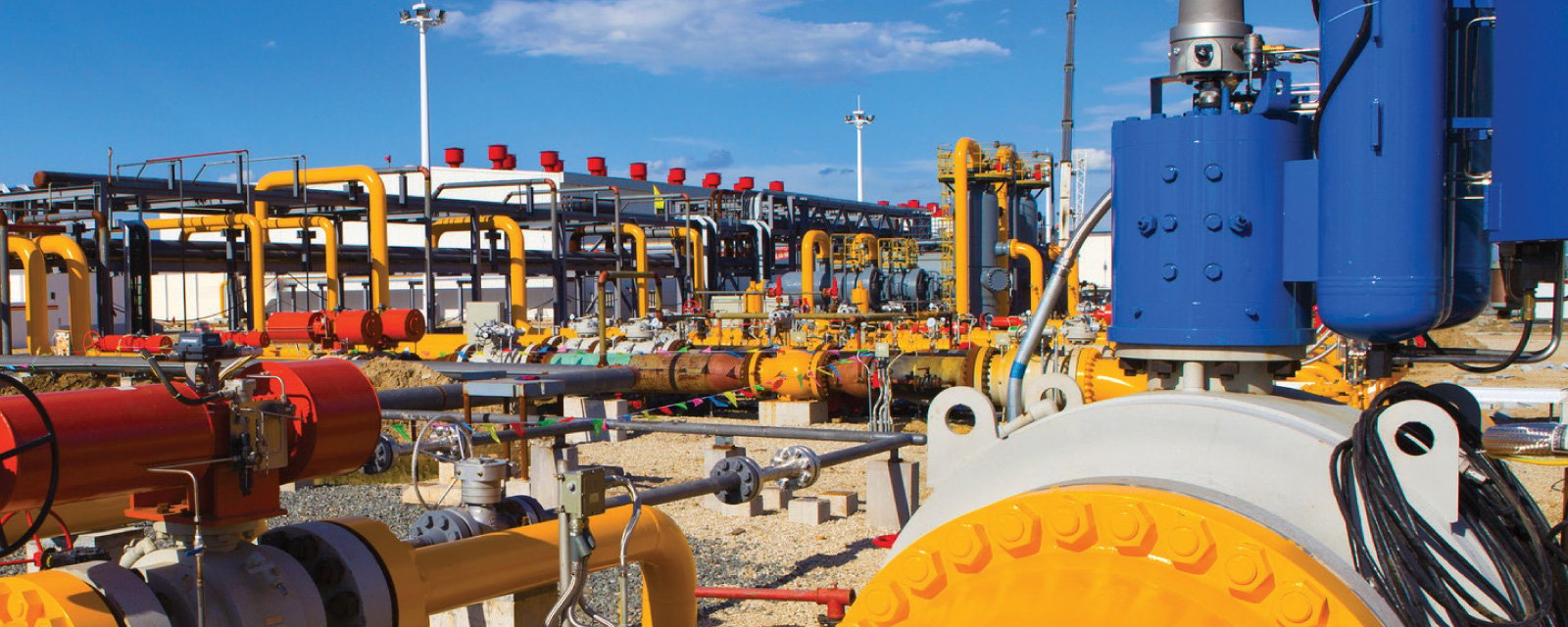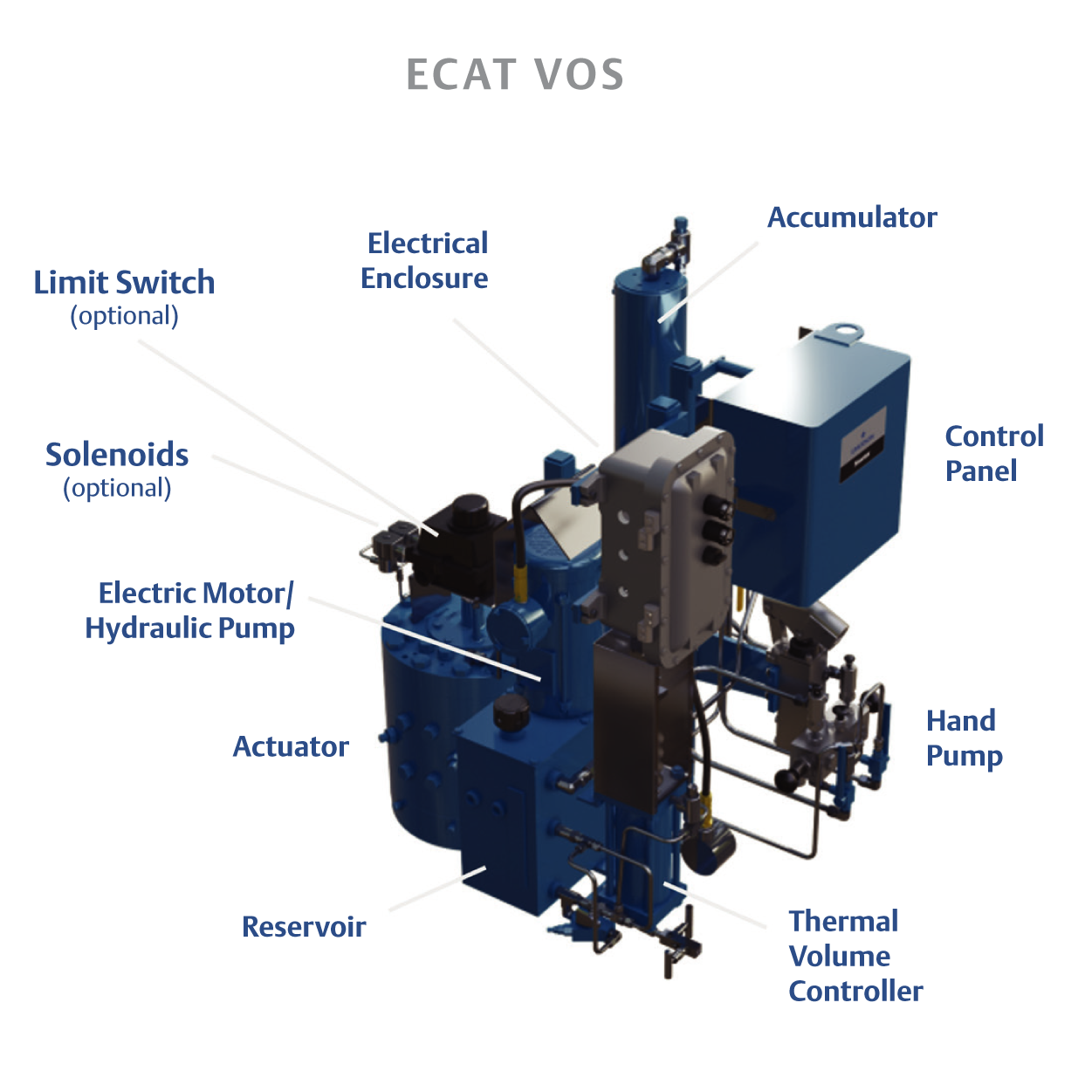Sequence 3
With the closing stroke complete, the actuator begins gas re-injection process
The ECAT system utilizes a compact electro-hydraulic motor and pump as the energy source to re-inject power gas back into the pipeline. Following valve operation, the motor/pump will automatically start, forcing hydraulic fluid back into the accumulator. As the accumulator fills with fluid, the power gas is re-injected back into the pipeline. The motor only runs for a short time during the gas re-injection process. Once the gas re-injection process is complete, the motor automatically stops and the system remains in a fully charged “ready to stroke” state awaiting a command to open the valve. When an open command is received, the control directs the flow paths to rotate the actuator in the counter-clockwise direction and the gas re-injection process repeats.







